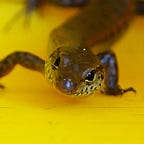Transformations, Drawn from the Life
Harriet and Helena Scott’s meticulous observations of butterflies and moths
The cocoon of the Emperor Gum Moth is tough. Spun from silk and cemented onto the branches of a Eucalyptus tree, it is exposed to sun and rain and to predators for whom the developing and defenceless insect inside would be a decent meal. But the protective case that keeps the danger out also locks the occupant in. Breaking out requires a special effort. When the moth is ready to emerge, it secretes an enzyme that dissolves the silk and then saws its way out with sharp hooks or spurs at the base of each forewing.
Entomologist Alexander Walker Scott described the activity in the first volume of his book Australian Lepidoptera and their Transformations, Drawn from the Life (1864):
During this action the insect maintained a slow rotatory motion, until the hooks were plainly visible to us, appearing and disappearing alternately and quickly, and irresistibly recalling to mind the sound produced by the gnawing of that domestic torment — the rat.
The ‘us’ observing the behaviour were Scott and his daughters Harriet and Helena. Scott was a noted entomologist; Harriet and Helena became noted entomological artists.
